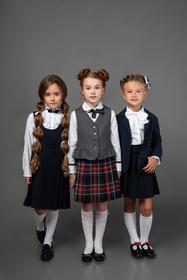Whitney M Young Early Childhood serves 215 students in grades Prekindergarten-Kindergarten.
The student-teacher ratio of 13:1 is lower than the Indiana state level of 15:1.
Minority enrollment is 64% of the student body (majority Black), which is higher than the Indiana state average of 37% (majority Hispanic and Black).
Quick Facts (2025-26)
- School Type: Magnet School
- Grades: Prekindergarten-Kindergarten
- Enrollment: 215 students
- Student-Teacher Ratio: 13:1
- Minority Enrollment: 64%
- Source: National Center for Education Statistics (NCES), IN Dept. of Education
Top Rankings
Whitney M Young Early Childhood ranks among the top 20% of public schools in Indiana for:
Category
Attribute
Diversity
Community Size
Student Attention
School Overview
Whitney M Young Early Childhood's student population of 215 students has stayed relatively flat over five school years.
The teacher population of 16 teachers has grown by 100% over five school years.
School Type
Grades Offered
Grades Prekindergarten-Kindergarten
(No virtual instruction)
(No virtual instruction)
Total Students
215 students
Gender %
Total Classroom Teachers
16 teachers
Year Founded
1972
School Calendar
School Motto
Nothing without Joy
School Rankings
The diversity score of Whitney M Young Early Childhood is 0.72, which is more than the diversity score at state average of 0.57. The school's diversity has stayed relatively flat over five school years.
Student-Teacher Ratio
13:1
15:1
American Indian
n/a
n/a
Asian
2%
3%
Hispanic
21%
15%
Black
32%
13%
White
36%
63%
Hawaiian
n/a
n/a
Two or more races
9%
6%
All Ethnic Groups
Eligible for Free Lunch
48%
43%
Eligible for Reduced Lunch
3%
6%
School Statewide Testing
School District Name
Source: National Center for Education Statistics (NCES), IN Dept. of Education
Profile last updated: 02/09/2025
Frequently Asked Questions
What schools are Whitney M Young Early Childhood often compared to?
Whitney M Young Early Childhoodis often viewed alongside schools like Bunche Elementary School, Weisser Park Elementary School by visitors of our site.
How many students attend Whitney M Young Early Childhood?
215 students attend Whitney M Young Early Childhood.
What is the racial composition of the student body?
36% of Whitney M Young Early Childhood students are White, 32% of students are Black, 21% of students are Hispanic, 9% of students are Two or more races, and 2% of students are Asian.
What is the student-teacher ratio of Whitney M Young Early Childhood?
Whitney M Young Early Childhood has a student ration of 13:1, which is lower than the Indiana state average of 15:1.
What grades does Whitney M Young Early Childhood offer ?
Whitney M Young Early Childhood offers enrollment in grades Prekindergarten-Kindergarten (No virtual instruction).
What school district is Whitney M Young Early Childhood part of?
Whitney M Young Early Childhood is part of Fort Wayne Community Schools.
In what neighborhood is Whitney M Young Early Childhood located?
Whitney M Young Early Childhood is located in the Oxford neighborhood of Fort Wayne, IN. There are 1 other public schools located in Oxford.
School Reviews
Review Whitney M Young Early Childhood. Reviews should be a few sentences in length. Please include any comments on:
- Quality of academic programs, teachers, and facilities
- Availability of music, art, sports and other extracurricular activities
Recent Articles

School Vouchers: Updated Pros and Cons (2025 Review)
Comprehensive 2025 analysis of school vouchers, weighing benefits and challenges for families, funding, outcomes, and policy directions.

Benefits and Drawbacks of Homework in 2025
Explore updated 2025 insights on homework鈥檚 benefits, drawbacks, mental health impact, best practices, and policy trends in U.S. public schools.

Charter Schools vs Public Schools 2025: Key Differences & Trends
Explore updated 2025 insights comparing charter schools vs public schools, enrollment, academic outcomes, funding, and real-world examples for families and educators.





